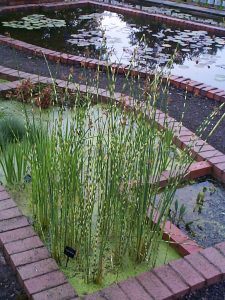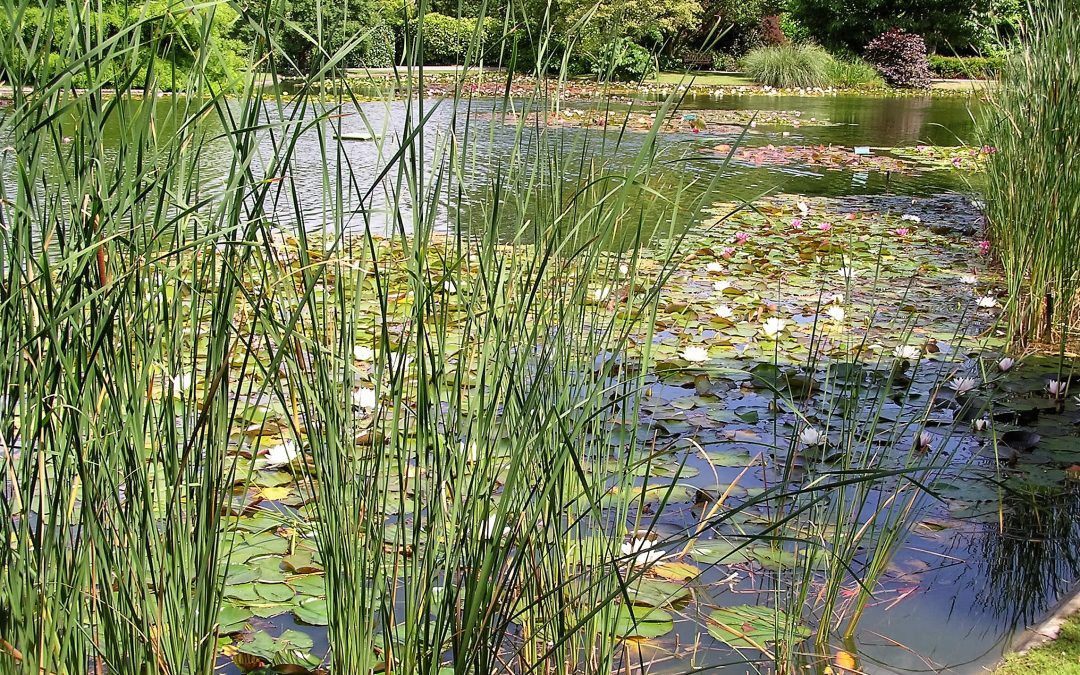Each pond is a mini eco-system. Each element, the water quality, number of plants, and pond life, all combine to balance this little watery world. When the pond is in balance, the water will be clear and your plants, fish and wildlife will be happy. Blanket weed, sometimes known as Silkweed, won’t be a problem. We can show you how to get balanced.
Don’t waste your money on chemicals
Plenty of people will tell you that you can use this or that chemical treatment to get rid of blanket weed. However, over 25 years in the business and many more as pond owners has shown us that there is no quick fix for to achieving the correct water balance for your pond.
The various preparations you can buy to reduce or kill silkweed provide only a temporary solution. Most will require repeated treatments, making them an expensive option. As always when using chemicals, getting the dosage right is essential. Few ponds are a regular shape and the correct dose is based on calculating the precise volume of water in the pond. Working out the right amount of chemical to use for your pond can be very difficult. If you underestimate the dose the treatment will have little or no effect, but if you overdose you will damage or even kill other plants, another expensive mistake!
New ponds are safe from blanket weed though?
Any new pond, whether filled with tap water, ground water, spring or rainwater, will contain a high level of nutrients. Also nutrients contained in any soil used for planting will leach out into the water. Any plants you introduce will be young and even though most pond plants grow quite rapidly, they will take a little while to get big enough to use up all the lovely nutrients now in the water.
The result is often blanket weed. It’s more than happy to feed off the nutrients and until the right balance is reached algae will be a pest.
It went away – now it’s back
Maintaining the right balance of plants, sunlight and nutrients in your pond is essential, or blanket weed can continue to be a problem.
- Don’t overcrowd your fish. The more fish you have the more waste they will produce and all that waste just increases the nutrient level in the water. See What plants can I put in my Koi pond?
- Never put soil directly into a concrete or lined pond, always contain your plants and soil within planting crates.
- Don’t add more nutrients. Rotting vegetation such as dead leaves falling into the pond from surrounding trees, fresh water added to the pond during drought periods or run-off from surrounding areas, especially farm land, will all give the nutrient levels a boost.
 So what’s the solution to my silkweed problem?
So what’s the solution to my silkweed problem?
Hitting the perfect balance between nutrients and uptake from pond plants. It’s not as hard to achieve as you might fear.
Firstly follow the tips above to keep nutrient levels even.
Secondly, shade the surface of your pond to fend off any algal bloom. Without doubt, we have found that the best plants for surface shade are water lilies. When their leaves cover up to half the water surface they will provide enough shade to protect the pond from getting too much sunshine, keeping blanket weed at bay.
Thirdly, plant plant plant! For advice on which plants would be best for your pond, take a look at our expert advice on plant care. You will also find information on how many of each plant you need for your pond size. For example, we recommend approximately 3 marginal plants per metre of shelf space and one lily for every 1.5m² of water surface area. If in doubt, get in touch, and we’ll be happy to advise.

